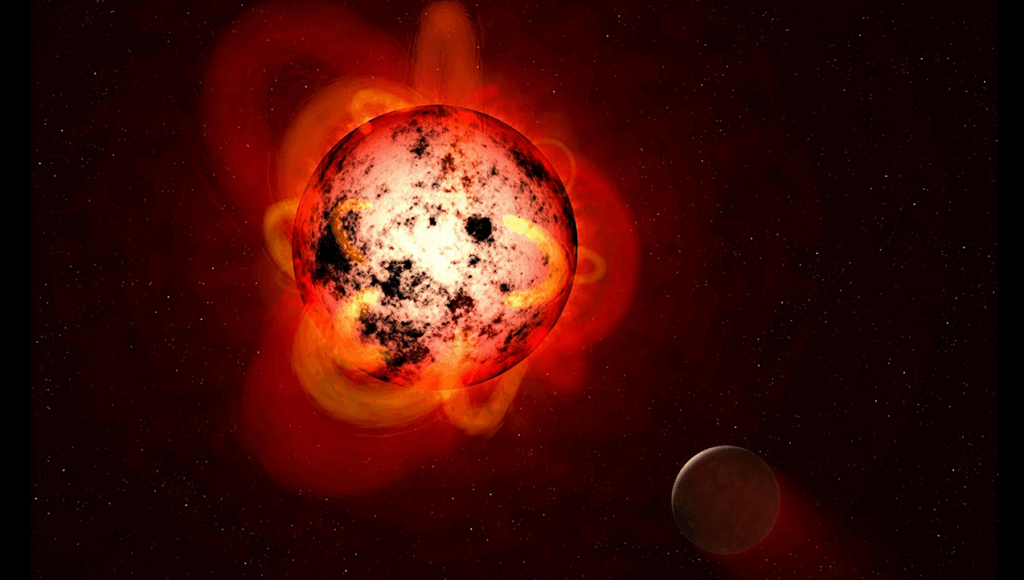Arid or Cloudy: Characterizing the Atmosphere of the Super-Earth 55 Cancri e Using High-Resolution Spectroscopy

The nearby super-Earth 55 Cnc e orbits a bright (V = 5.95 mag) star with a period of ~ 18 hours and a mass of ~ 8 Earth masses. Its atmosphere may be water-rich and have a large scale-height, though attempts to characterize it have yielded ambiguous results.
Here we present a sensitive search for water and TiO in its atmosphere at high spectral resolution using the Gemini North telescope and the GRACES spectrograph. We combine observations with previous observations from Subaru and CFHT, improving the constraints on the presence of water vapor. We adopt parametric models with an updated planet radius based on recent measurements, and use a cross-correlation technique to maximize sensitivity.
Our results are consistent with atmospheres that are cloudy or contain minimal amounts of water and TiO. Using these parametric models, we rule out a water-rich atmosphere (VMR >= 0.1%) with a mean molecular weight of <= 15 g/mol at a 3 sigma confidence level, improving on the previous limit by a significant margin. For TiO, we rule out a mean molecular weight of <= 5 g/mol with a 3 sigma confidence level for a VMR greater than 10^-8; for a VMR of greater than 10^-7, the limit rises to a mean molecular weight of <= 10 g/mol. We can rule out low mean-molecular-weight chemical equilibrium models both including and excluding TiO/VO at very high confidence levels (> 10 sigma). Overall, our results are consistent with an atmosphere with a high mean molecular weight and/or clouds, or no atmosphere.
A. Jindal, E. J. W. de Mooij, R. Jayawardhana, E. K. Deibert, M. Brogi, Z. Rustamkulov, J. J. Fortney, C. E. Hood, C. V. Morley
Comments: 15 pages, 12 figures, 1 table
Subjects: Earth and Planetary Astrophysics (astro-ph.EP)
Cite as: arXiv:2007.03115 [astro-ph.EP] (or arXiv:2007.03115v1 [astro-ph.EP] for this version)
Submission history
From: Abhinav Jindal
[v1] Mon, 6 Jul 2020 23:22:50 UTC (6,304 KB)
https://arxiv.org/abs/2007.03115
Astrobiology








